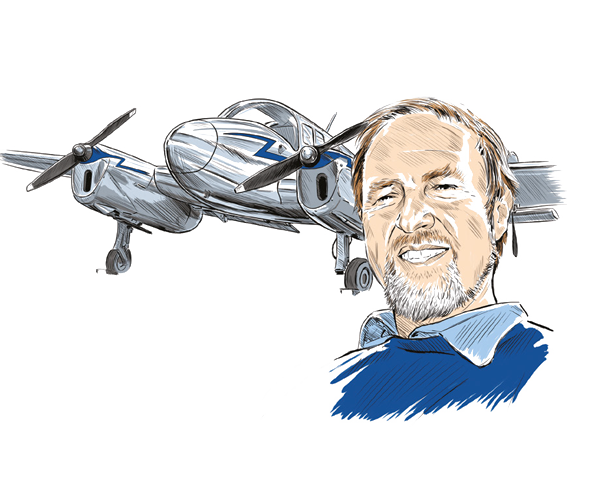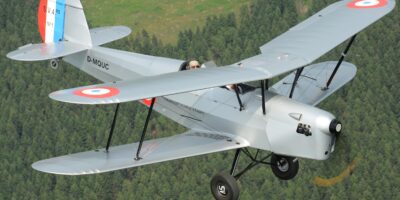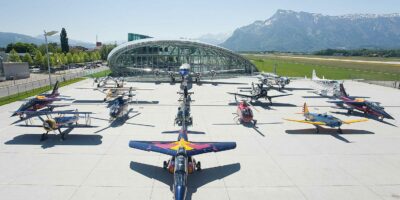I have always wanted a Miles Aerovan. You remember – the high-wing, twin-engined cargo aeroplane with the cockpit and load space combined, and not just because it’s a Miles – that obsession came later – but more because it’s always seemed like the ultimate private aviation utility. Maybe that’s not very cool, not very WWII warbird, until you remember where the latest Range Rovers and their ilk came from… The 1971 original was such a simple but apparently radical idea, it makes you wonder why nobody had thought of it before? Muddy field by day, upmarket restaurant by night with just a hose on the plastic floor in between. It’s that combination of unlikely capabilities which always seems so seductive, although perhaps not always…
“He put his Peugeot in the back of the Skyvan and flew somewhere close”
A trip courtesy of Silver City Airways in a Bristol Freighter out of Lydd, with the family Hillman Minx estate visible through the cargo door that someone had forgotten to latch, is forever etched in my mind. I had never flown before, and nothing could have prepared me for the shaking and shuddering as a pair of Bristol Hercules ran up and cycled magnetos and propellers. I didn’t know whether it would stay together long enough to take to the air, or whether the river of fuel which was gushing out of someone’s filler cap and cascading down the floor would ignite and dispatch us in some bizarre cremation before it could. Didn’t anybody check these things…? Were the wings supposed to flap about like that…? I was more frightened than I can ever remember. My father had been a navigator in a Lancaster so maybe he was used to it, but the next time… he used the ferry.
Since then I’ve realised that wings need to flap, and aeroplanes will move in all axes, even when they’re on the ground. These days it’s reassuring rather than frightening. A few years ago, I had gone to visit the much-missed Doc Wallace for my annual medical when I noticed a Belgian-registered Peugeot 205 parked outside. Brian explained that it belonged to the owner and pilot of a Shorts Skyvan who used it for parachuting – I think at La Sauveniere, right down in the south-east of Belgium in the lee of the Ardennes mountains near Spa-Francorchamps. Come medical time he put the Peugeot in the back of the Skyvan and flew somewhere close, unloaded and drove to Brian’s place, then back, all in a day. Now that is definitely cool. Forget my folding Brompton stashed on the back seat of my Jodel, on which I wobble my way from Goodwood to my digs, briefcase strapped behind the saddle and overnight bag over the shoulder. I could just unload the MX5, or whatever, and travel in style to the pub. Or come to think of it, I could just unroll the mattress and draw the curtains… There is the small matter of the fuel required to feed a pair of Turbomeca Astazous, but at least they burn paraffin.
By then though, I had already decided that – like the original Range Rover – there was nothing like a Miles Aerovan. I had yet to be ordained as a Miles disciple, which would morph desire into scientific faith, but I knew enough to see the Aerovan was powered by a pair of modest inline piston engines (Blackburn Cirrus Majors as it turned out, just like my Messenger’s, and with similar fixed pitch Fairey-Reed propellers), so it might even be affordable. And unlike the Skyvan, it was stylish, more like an airship’s gondola with wings than a flying Ford Transit. Just check out the windscreen which looks like the quarter of an orange, and then the elegant tailcone and triple fins, and of course, the Miles PR photo showing an MG TC just driving in. Both car and aircraft had apparently been sold to a Nuffield dealer in Switzerland.
The Aerovan could carry an amazing one-tonne payload on its 310hp, cruised at 110mph and cost £5,000. There were proposals for a 10-seater aircoach, an ambulance, an Air Observation Post with both upper and lower glazed decks, a flying boat version and even a larger horse box, powered by a pair of Armstrong Siddeley Cheetah radials. Alas, of the 50-odd built in 1946 and 1947, none survive, and why would they? For me, the Aerovan’s charm and capability are inescapable, but I guess it’s still utility. Maybe if Miles had survived the post-war hiatus, more would have been made. For many years, the last reminder, an Aerovan tailcone, served as a windsock tower at Newtownards, near the former Miles factory.
If you add accommodation, to me the whole idea makes even more sense. There have been a few examples of flying motorhomes, most notably the 1970s Winnebago Helihome, based on a Sikorsky S56 or 58 built for US President Jimmy Carter. It slept six, offered a bathroom with hot showers and toilets, a full galley with stove and refrigerator, colour TV with optional screen room, on board comms system, fresh water tank, 6,000 BThU air conditioner, 40,000 BThU furnace, all of which it surely needed, if the President was to ride on board… The Explorer Amphibian designed and built in 1990 by Avid Flyer designer Dean Wilson for French Explorer Hubert de Chevigny was similar in intent, but more modest in facility. Powered by a pair of 0-540 Lycomings, it was intended to reach the parts of Africa that were impossible by any other means, a bit like the Grumman Amphibian conversions for the oil prospectors of the 1970s. The Explorer though, included a hatch in the floor so you could dive without having to clamber over the sides with your oxygen bottles… Or there’s a Widgeon or a Goose… They’ll do much the same job, and there’s a few available. I dunno… I’d still rather have an Aerovan, even if it couldn’t offer a diving hatch…
Vintage aircraft and cars make Mark particularly happy.
[email protected]






